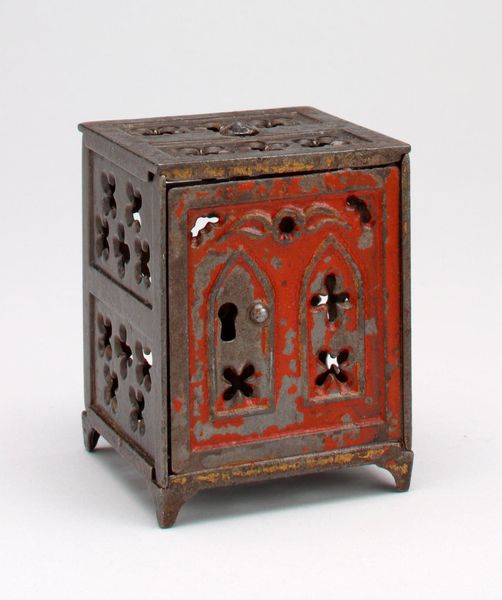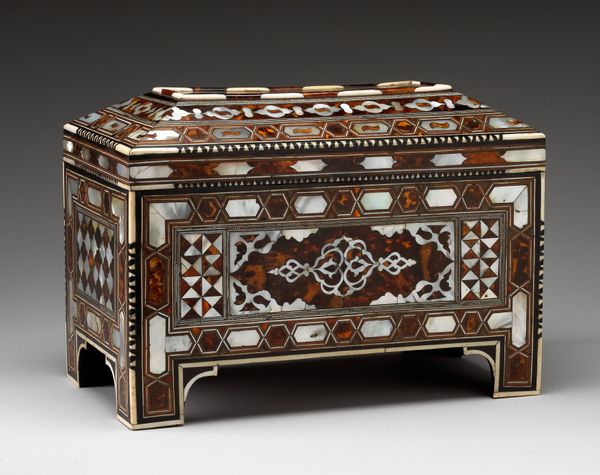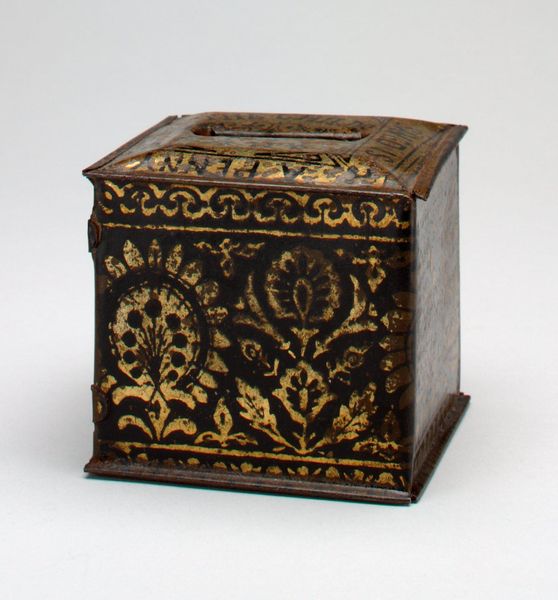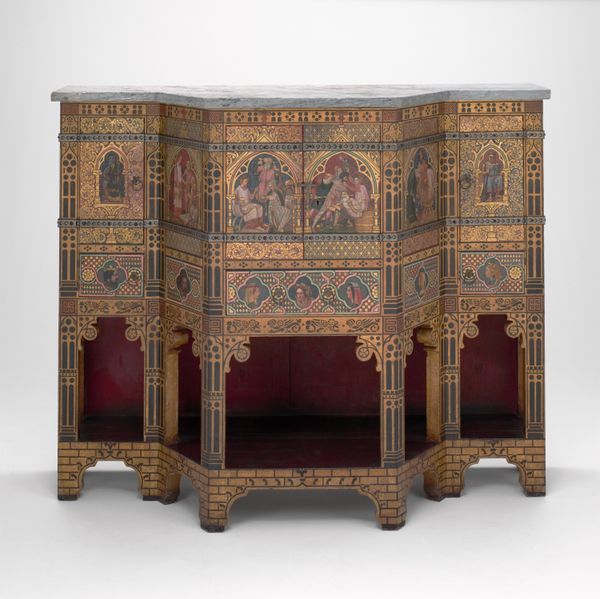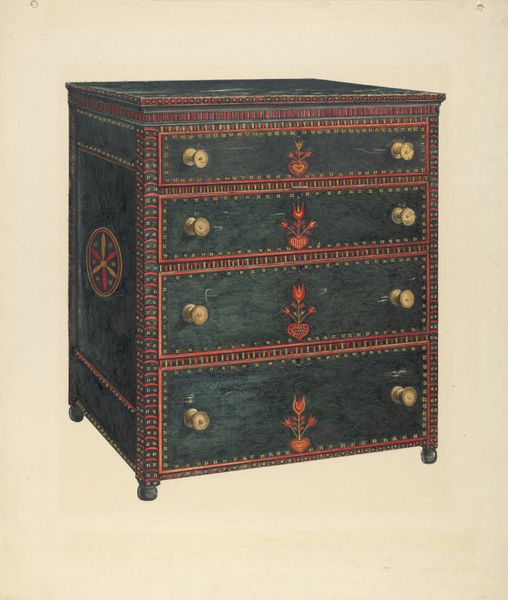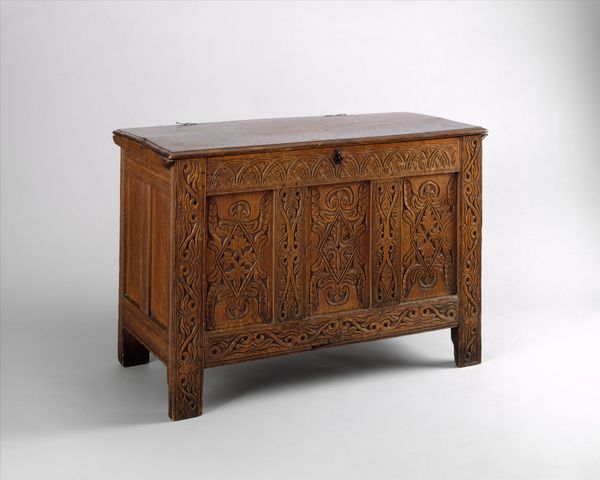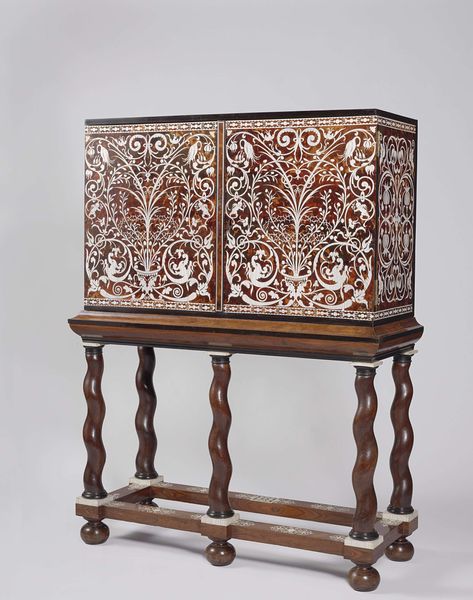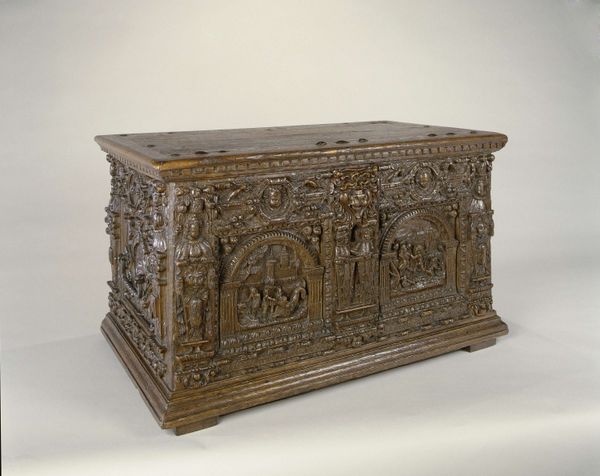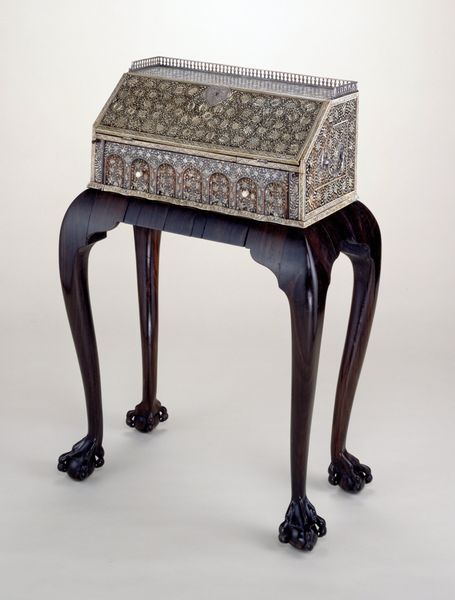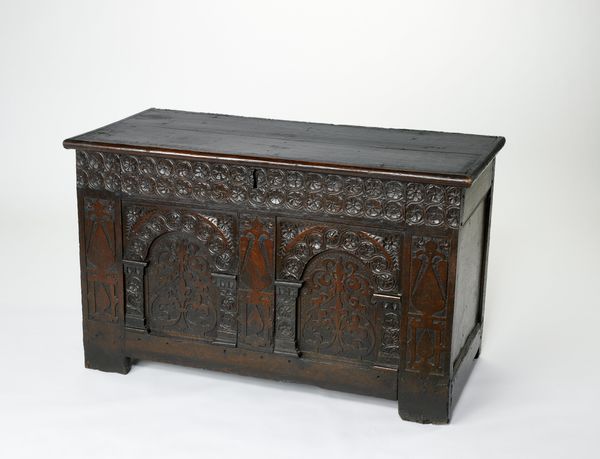
assemblage, metal, sculpture, wood
#
assemblage
#
metal
#
geometric pattern
#
geometric
#
sculpture
#
wood
#
islamic-art
#
decorative-art
Dimensions: Overall (wt. confirmed): 25 × 27 1/4 × 15 1/2 in., 273 lb. (63.5 × 69.2 × 39.4 cm, 123.8 kg)
Copyright: Public Domain
Curator: This “Cabinet,” made around 1867 by Maison Barbedienne, combines wood and metal in such an intricate way. What’s your initial take on it? Editor: The patterns are just mesmerizing. I’m drawn to the obvious Islamic art influences – it feels very decorative. But, like, why make a cabinet look like a mosque? How do you interpret that blend of cultures and functions? Curator: Excellent question. Consider the 19th century's obsession with Orientalism. European artists and designers often appropriated imagery from the Middle East and Asia. It was rarely about genuine understanding, more about exoticizing these cultures for a Western audience. Do you see how this piece might perpetuate a power dynamic, where Islamic art becomes a mere aesthetic element stripped of its original context? Editor: I see what you mean. The patterns are beautiful, but it feels like they’re being used to create something “exotic” for a European context, sort of reducing a whole cultural aesthetic to, like, decoration. Does the geometric design and structure tell you anything about its original purpose? Curator: That tension is crucial to understanding the piece. The geometry and form could be interpreted in multiple ways – potentially as an expression of intercultural fascination but more insidiously also as a form of cultural domination by Western consumerism, commodifying Islamic art for display. Now that you are aware of those contexts, what purpose would you assign to it? Editor: I guess that reframing really helps me see how complex even seemingly straightforward decorative art can be! Thanks for unpacking that. Curator: Absolutely. It's vital to keep asking these critical questions about cultural exchange and representation. The conversation shouldn't stop here.
Comments
No comments
Be the first to comment and join the conversation on the ultimate creative platform.
